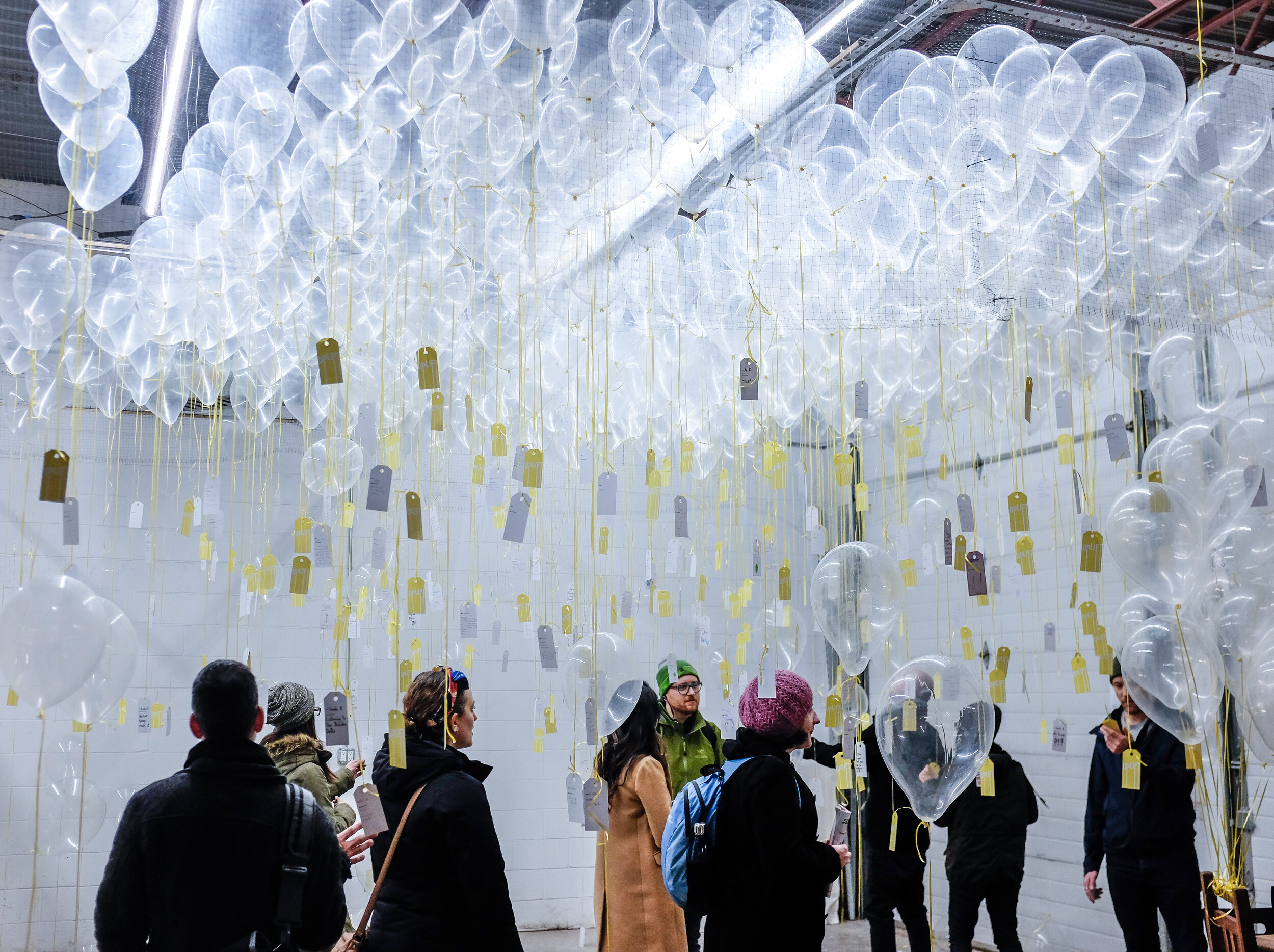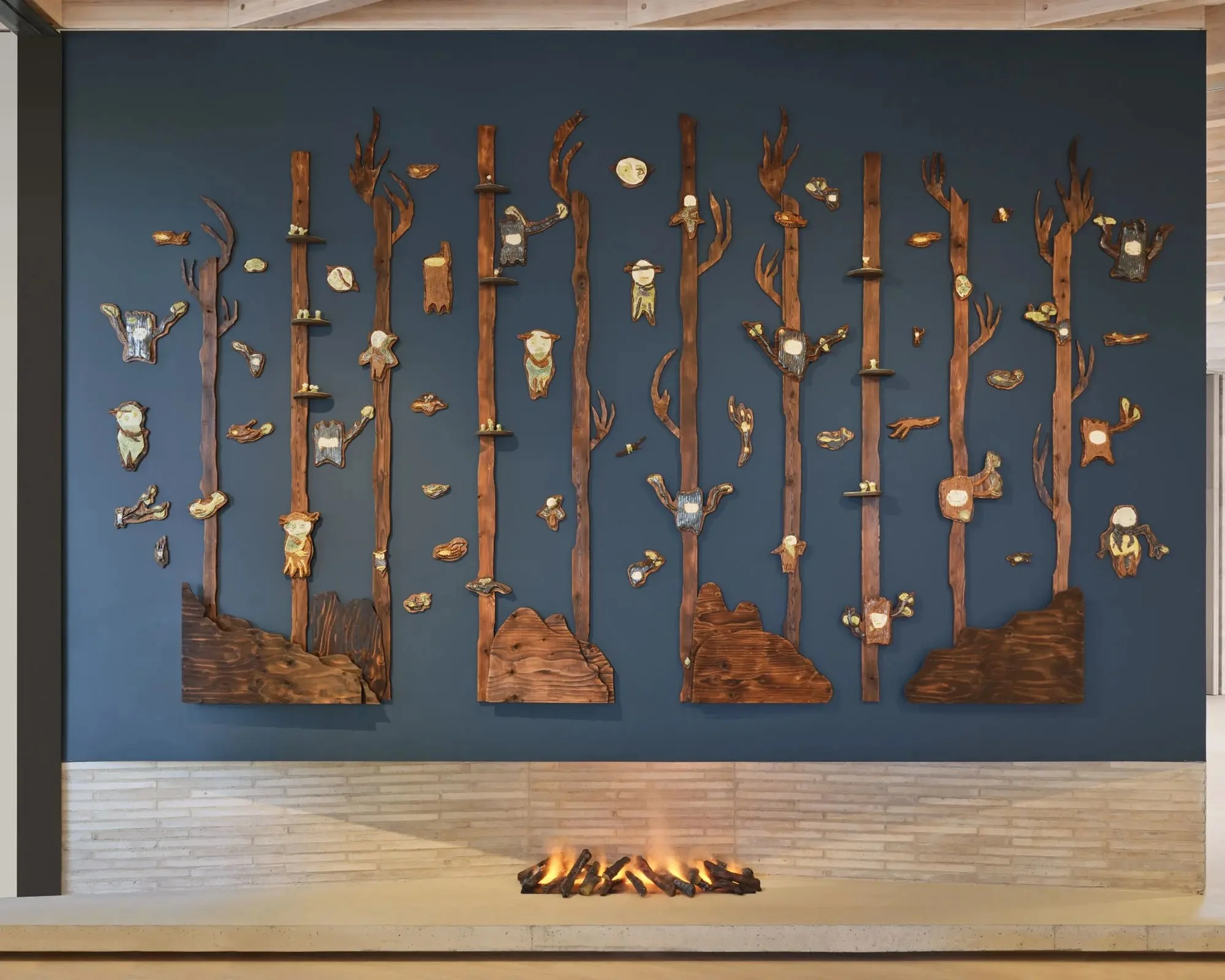As Vancouver arts studios continue to close, the dream of building the Eastside Arts District comes to be
Spurred by troubling findings from its award-winning report on the loss of artistic and cultural spaces, the Eastside Arts Society hopes to benefit the city’s arts community as a whole
Eastside Arts Society’s managing director Erin Frizzell (left), artistic and executive director Esther Rausenberg, and administrator Jodie Ponto. Photo by Wendy D.
AS AN ARTIST and arts advocate, Esther Rausenberg has seen things become increasingly dire for artists in Vancouver over the years: evictions, renovictions, rent increases, and diminishing studio space have meant enormous losses to their workspaces and communities—and the pandemic has only made the situation worse.
Rausenberg, who specializes in photo-based art, is the artistic and executive director of Eastside Arts Society, formerly the Eastside Culture Crawl Society. In 2019, the organization released a report called City Without Art? No Net Loss, Plus! that found more than 400,000 square feet of artist space had been lost over the previous decade. Rental rates for those spaces had increased by 65 percent.
Since the report’s release, studios have continued to close.
This past June, for example, the closure of White Monkey Design (496 Prior Street), a City of Vancouver building home to 20 artists, resulted in a loss of 16,000 square feet. There’s more to come. The Old Foundry Building (1790 Vernon Drive), an 18,000-square-foot space home to 30 artists, is set to shutter, affecting sculptors and other 3D artists whose media make it difficult to secure studio space. It’s anticipated that another 20,000 square feet will be lost this year through the shutdown of Eastside Studios at 550 Malkin Avenue.
“When it comes to loss of artist production space, the story just continues and continues,” Rausenberg tells Stir. “We thought, if we don’t get involved in terms of advocating for both the preservation of space and the development of new space, we’re going to be moving toward a city without art. That was the notion behind the Eastside Arts District.
“There’s that saying ‘You don’t what you’ve got till its gone,’” she says. “That’s what’s happening with the arts. With the pandemic, there’s been a greater demand for the arts; there’s value in what it brings to people.”
City Without Art? No Net Loss, Plus! proved to be a wake-up call of sorts.
It was the first report to identify the loss of artist production space and offer solutions for the crisis facing artists of all disciplines in Vancouver’s Eastside through empirical data. The report targeted the same geographical boundaries as the annual Eastside Culture Crawl: Columbia Street, 1st Avenue, Victoria Drive, and the Waterfront. (Supported by a public forum and multi-venue art exhibition in October 2019, the report was co-directed by Rausenberg and EAS Board member, artist, and Stantec community planning consultant John Steil.)
On July 6, the Canadian Institute of Planners announced that the EAS is receiving its Award of Merit for New and Emerging Planning Initiatives as part of the 2021 Awards for Planning Excellence for its ground-breaking report. The national recognition honours projects that showcase planning excellence in the cultivation of Canada’s communities.
City Without Art? No Net Loss, Plus! was also the recipient of a 2020 Award for Excellence in Planning from the Planning Institute of British Columbia. The society was awarded the Gold Award for Research & New Directions in Planning. (To read the report, go to EAS.)
The EAS recently received a $300,000 grant from the Vancouver Foundation for a three-year development of a strategic plan for the creation of a designated Eastside Arts District. It will transform the Eastside’s arts and cultural assets from an ad-hoc, grassroots network into a formalized organization with stable funding and secure, long-term facilities for artists and cultural venues.
Over the next three years, EAS will collaborate with the City of Vancouver, which launched its own 10-year plan to support arts and culture in 2019 and passed a unanimous motion in 2020 to support the EAS’s vision of creating an Eastside Arts District.
The society will continue to produce the annual Eastside Culture Crawl - A Visual Arts, Design, & Crafts Festival, the open-studio event held each November. Pre-pandemic, the fest drew more than 45,000 attendees and featured over 500 painters, weavers, potters, printmakers, sculptors, furniture makers, designers, photographers, glassblowers, jewellers, and more.
New initiatives include the inaugural CREATE! Arts Festival happening this August, featuring hands-on art making activities led by local visual artists and craft makers. The project will also propose policy changes to sustain artistic work in the area.
Rausenberg emphasizes that the EAD will be inclusive of all art forms, from textiles to glassblowing to furniture making and beyond. It will encompass all types of artistic and cultural spaces, not just art studios but also music venues, restaurants, breweries, festivals, public art, and more.
“When I speak about space loss, I’m not just referring to visual arts; whatever space is used here as an arts and culture space needs to be preserved and new spaces for all the arts disciplines need to be developed,” Rausenberg says. “I hope by the end of this we’ll have a very interactive map that showcases all of what is available here in this amazing part of the world. This is kind of the nexus of Chinatown, Strathcona, Japantown, and the Italian community.”
A key priority will be mapping Indigenous cultural assets.
Eastside Culture Crawl Photo by Jodie Ponto
Rausenberg sees the EAD as a pilot project, one that could be applied to other areas. She has already received calls from other municipalities asking about it. “If we’re successful in terms of implementing policy tools, they will be transferable to the rest of the city,” she says. “It’s not just about us on the Eastside. This is a pilot to try to see what we can do to reverse this situation or stop the bleeding. Whatever mistakes we make along the way, other people will benefit from. This is about arts happening throughout the city, not just on the Eastside. This initiative, I hope, will add towards the strengthening of the arts community as a whole.”
At this stage of the project, the focus is on planning. Work will include analyzing existing policies and legislation, zoning considerations, and real estate context; it also consists of engaging community stakeholders, including artists, performers, Indigenous leaders, arts organizations, post-secondary institutions, private galleries, landowners, developers, and others. The EAS wants to hear people’s ideas and dreams but also their concerns and any worrying “what ifs” that could arise in developing the district.
Still, the possibilities are almost endless. Rausenberg would love to see more public art in the area. (The Eastside has the fewest number of public art pieces, seeing as how they’re generally tied to funds from major developers, she notes.) Maybe there could be a free Wi-Fi zone, the expansion year-round arts programming, and live music in local parks. Whatever comes to be, the EAS wants to have a positive impact on the entire community, notably its marginalized population.
Rausenberg credits the Vancouver Foundation for being “forward thinking” in its support. And she points to the Eastside Culture Crawl as an example of “if you build it, they will come”.
“We’re looking at how we can build capacity for artists and artists’ initiatives in different ways, to build on what is existing here and strengthen it so that artists can not just survive but thrive,” Rausenberg says. “The creative sector really moves society forward. When I think about the city without the arts community, it would be a pretty stagnant society.
“What we have here is so rich in terms of arts and culture; the arts ecology, richness, and depth here is unparalleled, and we don’t want to lose it,” she adds. “If you don’t start somewhere, you don’t have a hope. That’s what this is.”














